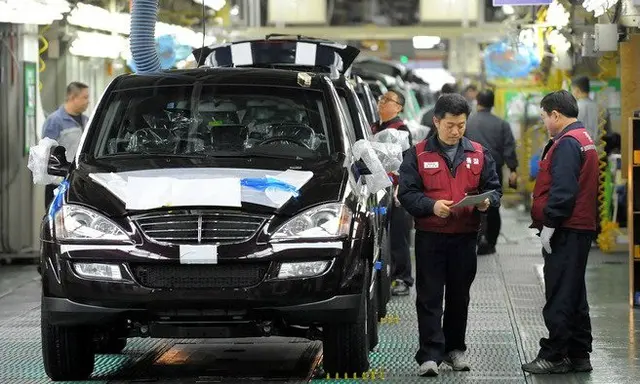Industrial production in South Korea fell in the first month of this year, after rebounding in the previous month, boosting concerns about economic slump amid bleak domestic demand and sluggish exports, a government report showed Wednesday.
Output in all industries shrank 1.2 percent in January from a month earlier, according to Statistics Korea. It was a fall from a 1.3 percent growth in December when the output posted the first rebound in three months.
Retail sales declined 1.4 percent in January on a monthly basis. Demand for non-durable and semi-durable goods, including food and beverage and clothing, gained, but sales in durables like cars tumbled 13.9 percent.
Facility investment dropped 6 percent as investment in machinery and transport equipment plunged 2.5 percent and 11 percent respectively.
Exports, which account for about half of the export-driven economy, posted the longest downward trend for 14 months in a row in February when the exports declined 12.2 percent from a year earlier.
The so-called triple whammy in exports, corporate investment and private consumption spread worries that the economy may fall into a prolonged economic slowdown. Market experts worried that the economy may fail to post a 3 percent growth this year.
Production in the construction sector inched up in January, but those in the manufacturing and service industries showed a pessimistic picture, dragging down the overall industrial activity.
Output in the mining and manufacturing industry dipped 1.8 percent in January from a month earlier due to soft demand for semiconductors and automobiles.
Inventory among manufacturers increased 2.2 percent amid fragile domestic demand. Manufacturers posted an average capacity rate of 72.6 percent in January, down 1.1 percentage points from the previous month.
Production among service companies declined 0.9 percent on the back of weak demand for sports and leisure activities as well as weakness in the publication and broadcasting sector.
Sales in department stores, discount chains and supermarkets increased in January, but sales of cars and fuels tumbled 14.2 percent on a monthly basis amid lower crude oil prices.
Machinery orders, excluding ships, plunged 16.1 percent in January from a year earlier due to soft demand for cars and transport equipments.
Construction completed rose 1.3 percent in January on a monthly basis thanks to growth in housing construction, but construction orders declined 6.4 percent on a yearly basis.
The cyclical factor of leading indicators, which reflects an economic outlook, slid 0.2 points in January from a month ago, with the figure for coincident indicators falling 0.2 points.
 简体中文
简体中文

